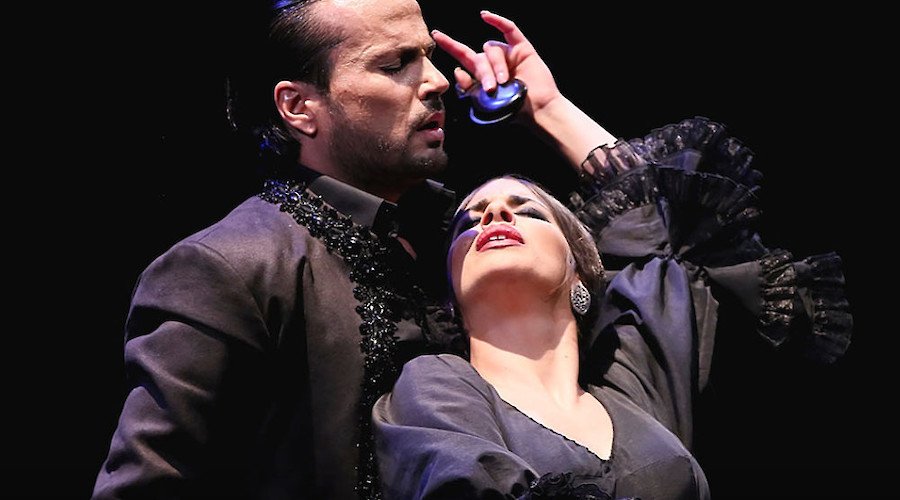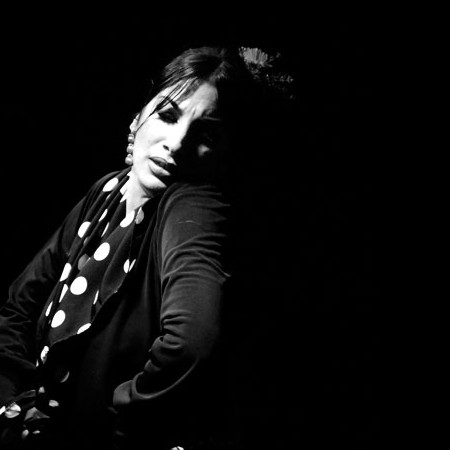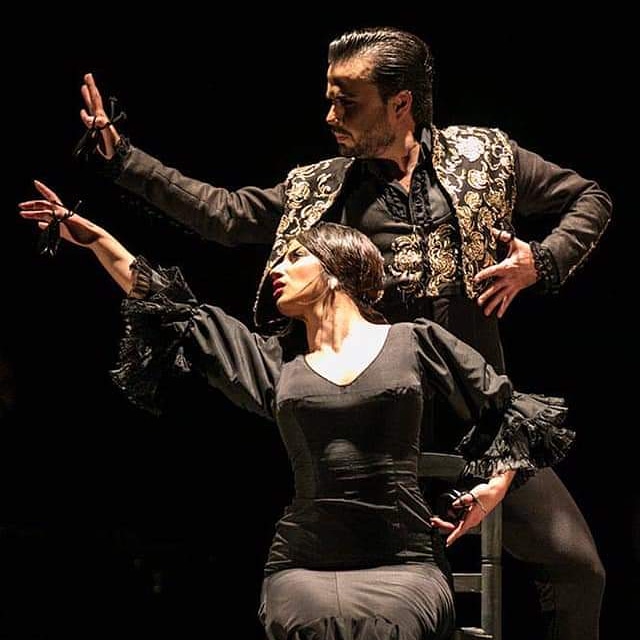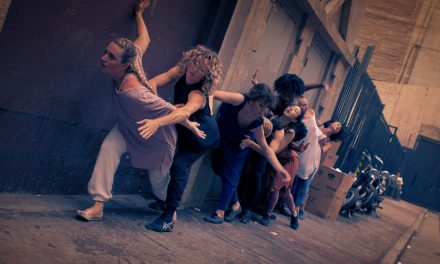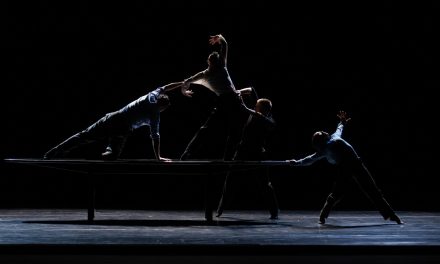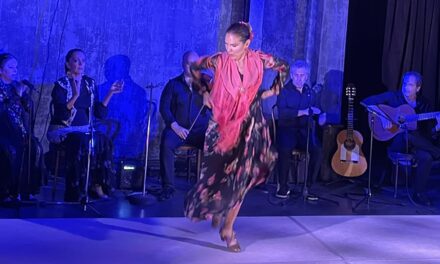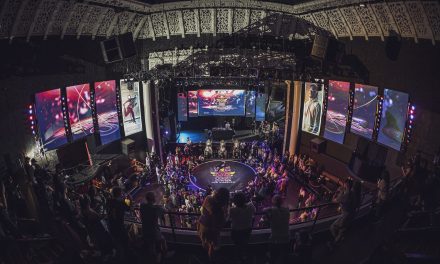Friday night the Broad Stage in Santa Monica celebrated the 10th Cumbre Flamenca Festival brought to us by Vida Flamenca, a Los Angeles based nonprofit that specializes in providing and expanding Flamenco programming and culture with the Los Angeles community. The Cumbre Flamenca Festival has featured artists including Concha Jareño, Ismael de la rosa, Belén Maya, Domingo Ortega, Iván Vargas, and many more. This year’s headliners included dancers Adrián Santana and Águeda Saavedra, and guitarist Francisco Vinuesa. Over the years Cumbre Flamenca has been a celebration of significant performers in Flamenco from Spain, in addition to showcasing wonderful artists based in Los Angeles.
This show had the unique quality of bringing together a collection of artists and creating an evening of dance diverse in artistry and presentation of Flamenco. The show began with an elegantly choreographed Fandangos by Daniela Zermeño Sanchez, danced by Zermeño Dance Academy dancers. The dancers had particularly strong focus and were able to maintain a cohesive relationship to one another while seamlessly executing the choreography. The festival also featured strong solo performances from Daniela Zermeño who danced por Alegrías and Lakshmi Basile, and “La Chimi”, who danced a Guajira.
Águeda Saavedra blessed the audience with a Soleá. Her voyage through the dance seemed internal, but allowed the audience to observe an intimate exploration of the form. The way her body moves is Flamenco in nature even down to the way she accents her movements with sharp snaps and clicks of her tongue. Saavedra is undeniably Flamenca in her delivery and articulation of her dance and has a tenacious connection with the musicians. The trajectory of Saavedra’s piece is built up by critical moments where she encapsulates the space of the entire stage by embracing the development of the cante, extending her arms straight behind her, her fingers pointing like daggers, and then releasing her body in a single breath. The juxtaposition of these vivid moments where her body seems to slow down time, combined with swift and powerful closes to her movement, makes for an exhilarating performance. She provides an enlivened experience for an audience member because during these moments of stillness you truly do not know what will come next. Saavedra’s command of space and timing in her dancing creates a nuanced web where together these long stretches of her body across the stage coupled with intricate moments of beautiful floreo and footwork, create a layered and complex Soleá. Saavedra is truly a marvelous demonstration of musicality and Flamenco artistry.
A main stage performance with Águeda Saavedra, however, would not be complete without her partner in crime, Adrián Santana. Santana began with a wonderfully choreographed Taranto with Manton (shawl), full of strong and sharp deep lunges, immaculate back attitudes, and multitudes of flawless pirouettes. Santana is revered for his exquisite use of manton and this did not go unnoticed by excited and fascinated audience members. Danced in a traditional traje corto of high waisted black pants and a glittery, sequined vest (a not so traditional twist), Santana brings to life older styles of Flamenco and Danza Española, influenced by dancers popular in the 50’s and 60’s such as José Greco, Antonio Gades, El Maestro Granero (with whom he studied). And of course, Pepito Vargas, Santana’s uncle and teacher since childhood who influenced his inherent knowledge of Flamenco. Watching Santana dance is to see a use of the body that is rare and truly captures the essence of those Flamenco artists who came before him who changed the use of the body in Flamenco by incorporating more elements from Danza Española. It is also important to note that Santana’s talent with manton may not have been so widely accepted 60 years ago when male dancers did not challenge traditional gender roles in their performance. I feel grateful to live in a society progressive in its perception of gender roles so that Santana and other male Flamenco artists can explore and perform with a tool as beautiful and unique as the manton.
If there is anything that can be said about Adrián Santana and Águeda Saavedra, it is that they really know how to put on a good show. The two together bring an exciting and contagious energy to the stage. They made their debut as a duet on stage when they performed in SIMBIOSIS, a piece choreographed by Santana, shown at the XXIII edition of the Festival de Jerez and the Festival Flamenco Albuquerque. Every moment the two spent on stage they were perfectly in sync; a connection that surely comes from hours of practice, but also a genuine friendship. The night’s show concluded with a joyful fin de fiesta as all of the dancers gathered and cheered each other on. Even some brave young dancers from the Zermeño Dance Academy took their patadas for Bulerías to the stage. A fin de fiesta always has a way of leaving an audience feeling energized and at peace; a perfect end to the 10th Cumbre Flamenca Festival.
Insider looks and highlights from the show can be seen on Adrián Santana’s instagram @adriansantanaflamenco. To stay updated the phenomenal dancers coming to Los Angeles sign up for Vida Flamenca’s newsletter on their website.
To view The Broad Stage performance calendar, click here.
Featured image: Adrián Santana and Águeda Saavedra – Photos courtesy of the artists.



